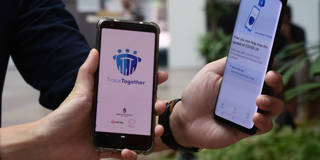It has now become clear that the only way to protect public health and restart the economy is gradually, through widespread tracking and tracing. But to make such systems palatable in the world's democracies, regulatory and technological hurdles will need to be cleared.
HALIFAX, NOVA SCOTIA – How, precisely, will we end the period of confinement that has stifled entire economies and left more than one billion people sheltering in place? Some have suggested a selective approach, whereby younger, less vulnerable cohorts would be ushered back to work before others. But dire warnings from epidemiologists about the inevitable health consequences have since eroded support for this strategy in most quarters.

HALIFAX, NOVA SCOTIA – How, precisely, will we end the period of confinement that has stifled entire economies and left more than one billion people sheltering in place? Some have suggested a selective approach, whereby younger, less vulnerable cohorts would be ushered back to work before others. But dire warnings from epidemiologists about the inevitable health consequences have since eroded support for this strategy in most quarters.